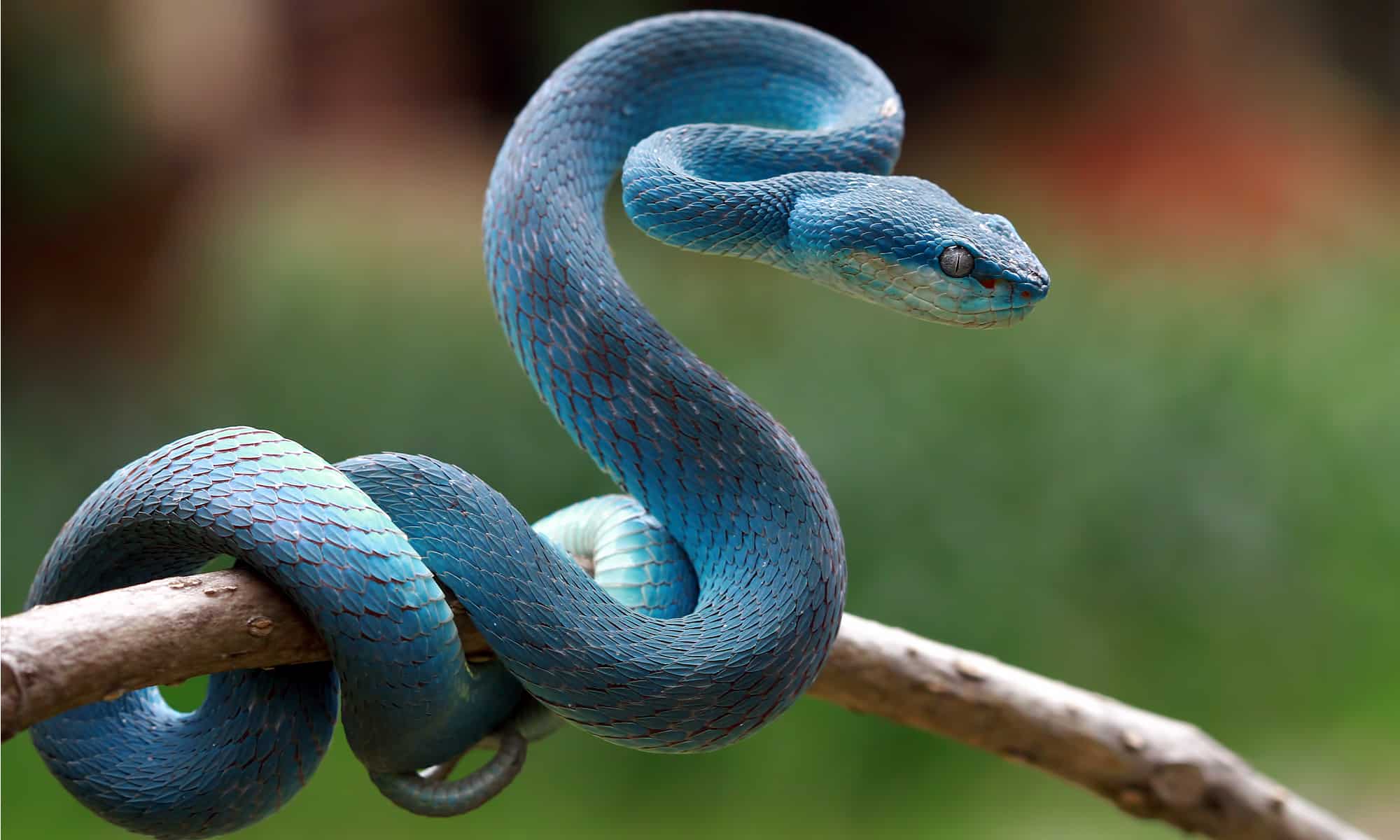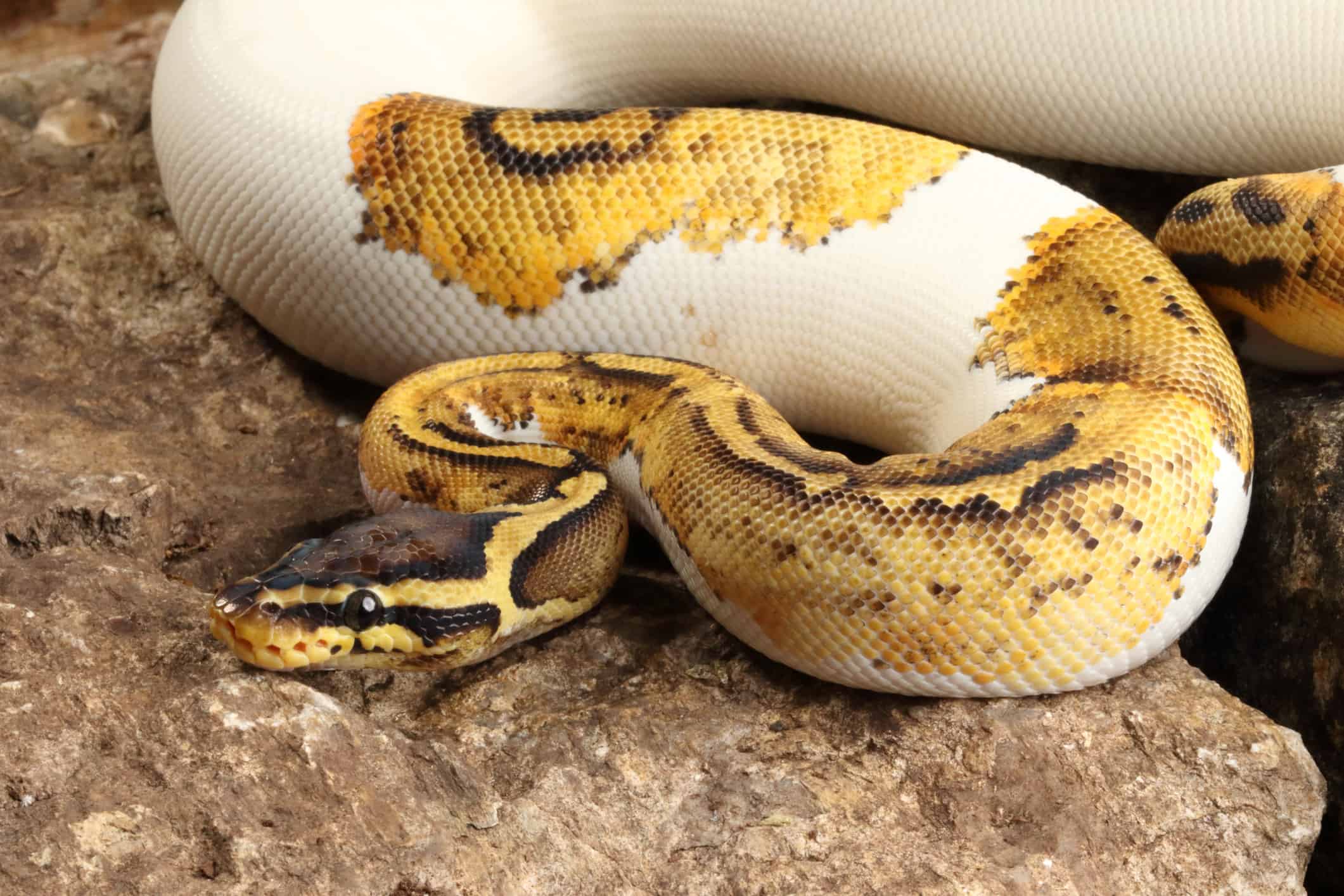Snakes come in a variety of colors. Some are brown or tan to help them blend into their environment and move about undetected. Others are brightly colored to warn potential predators that they are dangerous. A snake’s color can even help them to absorb heat and stay warm!
Snakes also exhibit numerous patterns. Piebald snakes (also known as pied) have a stunning pattern that is sought after by many pet owners. So what exactly are piebald snakes and how rare are these creatures?
What Are Piebald Snakes?
Piebald refers to an animal with irregular patches of two colors. In snakes, this usually means that the reptile has patches of its normal coloration interspersed with patches of white.
According to CB Reptile, there are two main types of piebald snakes. Low white refers to a piebald snake with few white patches, while high white means the snake has many white patches. Piebald snakes can also be bred with snakes with other unique genetic traits to create stunning color patterns.
Snake Coloration 101
Theoretically, any snake can be piebald, but the trait is most common in ball pythons and corn snakes. Perhaps the reason for this is that ball pythons and corn snakes are some of the most popular species kept as pets, so they are often bred to have eye-catching patterns.
In the wild, piebald coloring is far less common. A snake’s coloring has a purpose in each species. Some snakes are neutral colors like brown or tan to help them blend into their environment. Other snakes are brightly colored to signal that they are venomous and warn predators to keep away.

Some snakes, like this blue viper, are brightly colored to warn potential predators that they are venomous.
©Kurit afshen/Shutterstock.com
A snake’s skin also plays a role in heat absorption. Studies reported by Digital Jornal suggest that snakes living further north in the United States tend to be darker in color, while snakes in the south are lighter. This is because a snake’s dark color helps them absorb heat and warm themselves more quickly.
White is an unusual color for snakes in the wild. It is often the result of genetic mutations such as albinism and leucism. White snakes are at a disadvantage in the wild, as they are easily spotted by predators. However, snakes such as the bandy-bandy adapt by burrowing underneath rocks, logs, and soil during the day and emerging at night.
How Rare Are Piebald Snakes?
Piebald is a recessive trait. In many animals, including humans, offspring inherits two versions of a gene, known as alleles, from each parent, according to a paper from the National Human Genome Research Institute. In order for a snake to have the piebald appearance, both recessive alleles must be present.
Other recessive traits in snakes such as ball pythons are Albino, Clown, and Genetic Stripe, writes ARB Reptiles. Since piebald is a recessive trait, piebald snakes can be rare in certain species. While it might be rare to see a piebald snake in the wild, nowadays reptile enthusiasts breed these snakes to have this unique coloration.
For this reason, piebald pythons aren’t hard to find, though they can be expensive. Outlets such as CB Reptile sell piebald snakes for anywhere from $469 to almost $3,000! However, some snake enthusiasts report paying less for a basic piebald snake.

Ball Pythons are some of the most common snakes to exhibit the piebald trait. They are also popular pets.
©David Kenny/iStock via Getty Images
Types of Piebald Snakes
The most common piebald snake is the pied ball python. This refers to any ball python with the piebald recessive traits. However, if we get more specific we can look at other color variations in pied ball pythons.
For example, the “dreamsicle” ball python was originally created by careful breeding to blend Albino, Lavender, and Piebald recessive genes successfully together. These snakes tend to be white or pinkish with patterns of color distributed along their bodies.
Other piebald combinations include breeding the recessive piebald genes with the super pastel genes to create the killer pied snake, according to Morph Market.
Spider-pied snakes have an almost entirely white body with colorful patterned heads. Some piebald snakes are even bred to have orange patches with black markings that look remarkably similar to jack-o-lanterns (aka the pumpkin pied.)
In some instances, the recessive genes can make a piebald snake that appears almost entirely white. This is different from than albinino snake. Albino snakes lack melanin, which is the pigment that creates color, making them white with red eyes.
The photo featured at the top of this post is © Deb Davis/Shutterstock.com
Discover the "Monster" Snake 5X Bigger than an Anaconda
Every day A-Z Animals sends out some of the most incredible facts in the world from our free newsletter. Want to discover the 10 most beautiful snakes in the world, a "snake island" where you're never more than 3 feet from danger, or a "monster" snake 5X larger than an anaconda? Then sign up right now and you'll start receiving our daily newsletter absolutely free.
Thank you for reading! Have some feedback for us? Contact the AZ Animals editorial team.







